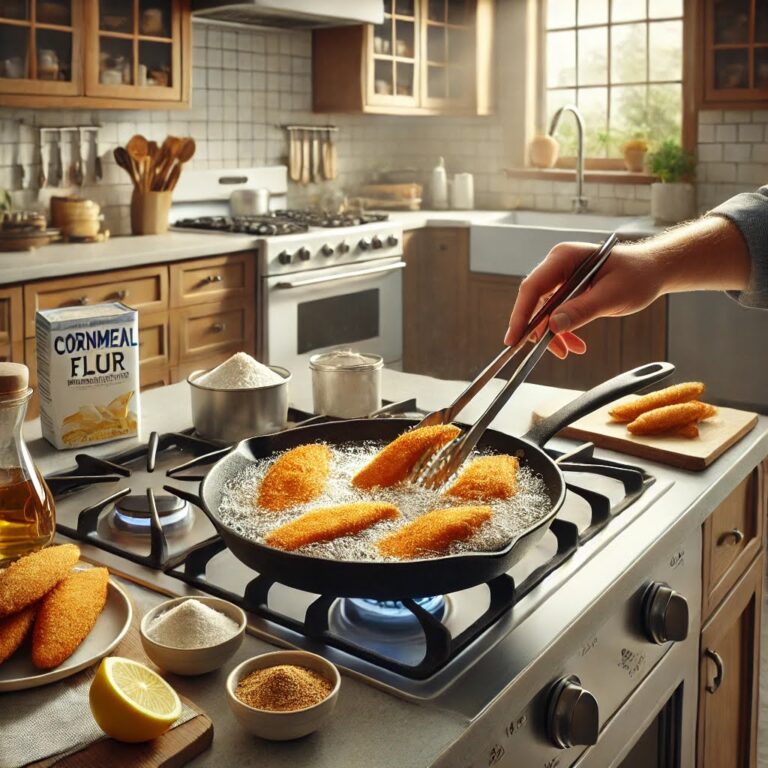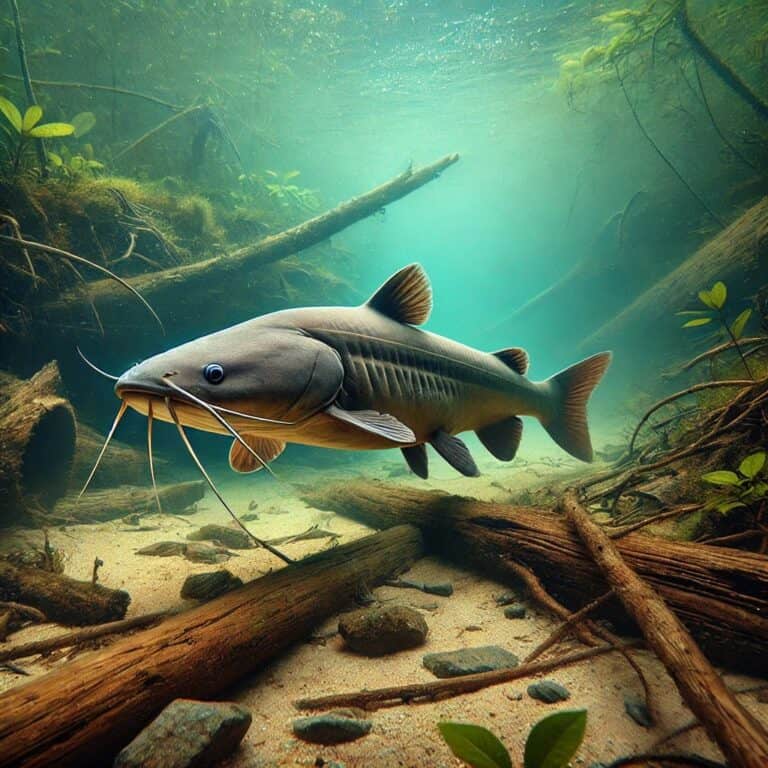Catfish Noodling: What It Is and Should You Try It?
Introduction
Catfish noodling, an unconventional and hands-on fishing technique, has been around for generations, captivating the adventurous spirit of anglers in the southern United States.
Known by many names, such as hand fishing, grabbling, or hogging, this unique method involves catching catfish using only bare hands.

In this article, we will delve into the fascinating world of catfish noodling, exploring what it is, the dangers involved, and the benefits it offers.
By the end, you’ll have a thorough understanding of this daring sport and whether it’s something you should consider trying.
What is Catfish Noodling?
Catfish noodling is a type of fishing where individuals use their hands to catch catfish, typically in rivers, lakes, or reservoirs.
Unlike traditional fishing methods that rely on rods, reels, and bait, noodling requires anglers to locate catfish holes or nests, often submerged underwater, and reach in to grab the fish by hand.
This practice is primarily carried out during the catfish spawning season, usually in the late spring and early summer when catfish are guarding their nests.
The Technique
The process begins with wading or diving into water bodies where catfish are known to inhabit.
Anglers search for submerged holes, crevices, or other potential hiding spots where catfish might be nesting.
Once a suitable spot is found, the noodler uses their hand to probe inside the hole, feeling for the presence of a catfish.
If a catfish is inside, it will often bite the noodler’s hand as a defensive reaction.
This is where the real challenge begins.
The noodler must then firmly grasp the catfish, typically by the jaw or gills, and pull it out of its hiding place.
The struggle can be intense, as catfish are strong and will put up a fight.
Successful noodling requires a combination of strength, technique, and courage, as the angler must maintain a firm grip on the fish and bring it to the surface without letting it escape.
The Dangers of Catfish Noodling
While catfish noodling can be exhilarating, it is not without its risks!
The dangers associated with this activity are numerous and should be carefully considered before attempting it.
Physical Injuries
One of the most significant dangers of noodling is the potential for physical injuries.
Catfish have sharp pectoral and dorsal fins that can cause deep puncture wounds.
Additionally, their strong jaws can deliver a powerful bite, which can lead to cuts, bruises, and even broken bones in severe cases.
The thrashing movements of a catfish can also result in the noodler being dragged underwater or losing balance, increasing the risk of drowning.
Encountering Other Wildlife
When reaching into underwater holes, there is always a possibility of encountering other wildlife.
Snakes, turtles, and even alligators may occupy the same habitats as catfish.
A bite from a venomous snake or an aggressive encounter with a snapping turtle can result in severe injuries and require immediate medical attention.
Water Hazards
Water bodies where noodling takes place can have hidden hazards such as submerged debris, strong currents, and low visibility.
Noodlers may become entangled in underwater vegetation or trapped by submerged objects, making it difficult to free themselves.
These hazards increase the risk of drowning, especially for those who are inexperienced or not strong swimmers.
Legal and Environmental Concerns
Catfish noodling is not legal in all states, and regulations vary widely.
Some states have strict rules regarding the practice, including designated seasons, size limits, and licensing requirements.
It is crucial to check local regulations before attempting noodling to avoid legal repercussions.
Moreover, there are environmental concerns associated with noodling.
Removing catfish from their nests can disrupt their breeding cycle and negatively impact local fish populations.
Ethical considerations should be taken into account to ensure sustainable fishing practices.

The Benefits of Catfish Noodling
Despite the risks and dangers, catfish noodling has its appeal and benefits that attract many enthusiasts to this unique sport.
Thrill and Adventure
The primary draw of catfish noodling is the thrill and adventure it offers.
For those seeking an adrenaline rush, the hands-on, primal nature of noodling provides an unmatched experience.
The challenge of locating, grabbing, and wrestling a large catfish using only bare hands creates an exhilarating and unforgettable adventure.
Connection with Nature
Noodling allows anglers to connect with nature on a deeper level.
Wading into rivers, feeling the rush of water, and engaging directly with aquatic life offers a unique perspective on the natural world.
This intimate interaction fosters a greater appreciation for the environment and the creatures that inhabit it.
Skill and Tradition
Catfish noodling is steeped in tradition, particularly in the southern United States.
For many, it is a way to connect with their cultural heritage and preserve a time-honored practice.
Noodling requires a specific set of skills and knowledge, including understanding catfish behavior and habitat.
Learning and mastering these skills can be immensely satisfying.
Community and Camaraderie
Noodling is often a social activity, bringing together friends, families, and communities.
The shared experience of noodling fosters camaraderie and strengthens bonds.
Many noodlers participate in organized events and competitions, further enhancing the sense of community and shared passion for the sport.
Sustainability and Conservation
When practiced responsibly and within legal guidelines, noodling can be a sustainable method of fishing.
Anglers who follow ethical practices, such as releasing non-target fish and respecting breeding cycles, contribute to the conservation of catfish populations.
Additionally, the practice can raise awareness about the importance of preserving aquatic habitats.
Should You Try Catfish Noodling?
Deciding whether to try catfish noodling ultimately depends on your personal preferences, risk tolerance, and respect for the environment.
Here are some factors to consider before taking the plunge.
Assessing Your Comfort Level
Catfish noodling is not for the faint of heart. It requires a certain level of physical fitness, mental toughness, and a willingness to embrace the unknown.
If you enjoy hands-on, adrenaline-pumping activities and have a high tolerance for discomfort, noodling might be a suitable challenge.
Preparing Adequately
Before attempting noodling, it is essential to prepare thoroughly.
This includes researching local regulations, obtaining any necessary licenses, and understanding the specific risks associated with the water bodies you’ll be exploring.
Learning from experienced noodlers, either through guided tours or mentorship, can provide valuable insights and increase your chances of success.
Safety First
Safety should always be the top priority when considering catfish noodling.
Ensure you have the proper gear, including fishing gloves, boots, and clothing to minimize injuries.
Never noodle alone; having a partner can assist in case of emergencies. Safety first!
Being aware of your surroundings and avoiding areas with known hazards, such as strong currents or wildlife, is crucial.
Respecting the Environment
Responsible noodling practices are essential to protect catfish populations and their habitats.
Avoid noodling during critical breeding periods, release non-target fish, and minimize disruption to the ecosystem.
By adhering to ethical guidelines, you can enjoy the sport while contributing to the conservation of aquatic life.
Exploring Alternatives
If the risks and challenges of noodling seem overwhelming, consider exploring alternative fishing methods.
Traditional rod and reel fishing, kayak fishing, or even guided catfish tours can provide rewarding experiences without the inherent dangers of noodling.
Conclusion
Catfish noodling is a unique and thrilling form of fishing that offers an adrenaline rush, a deep connection with nature, and a sense of tradition.
While it presents significant risks, including physical injuries and encounters with wildlife, the rewards can be equally compelling for those who seek adventure and challenge.
By thoroughly preparing, prioritizing your safety, and respecting the environment, you can determine if catfish noodling is an experience you want to try.
Now that you know more about catfish noodling are you going to try it?
Happy noodling!







